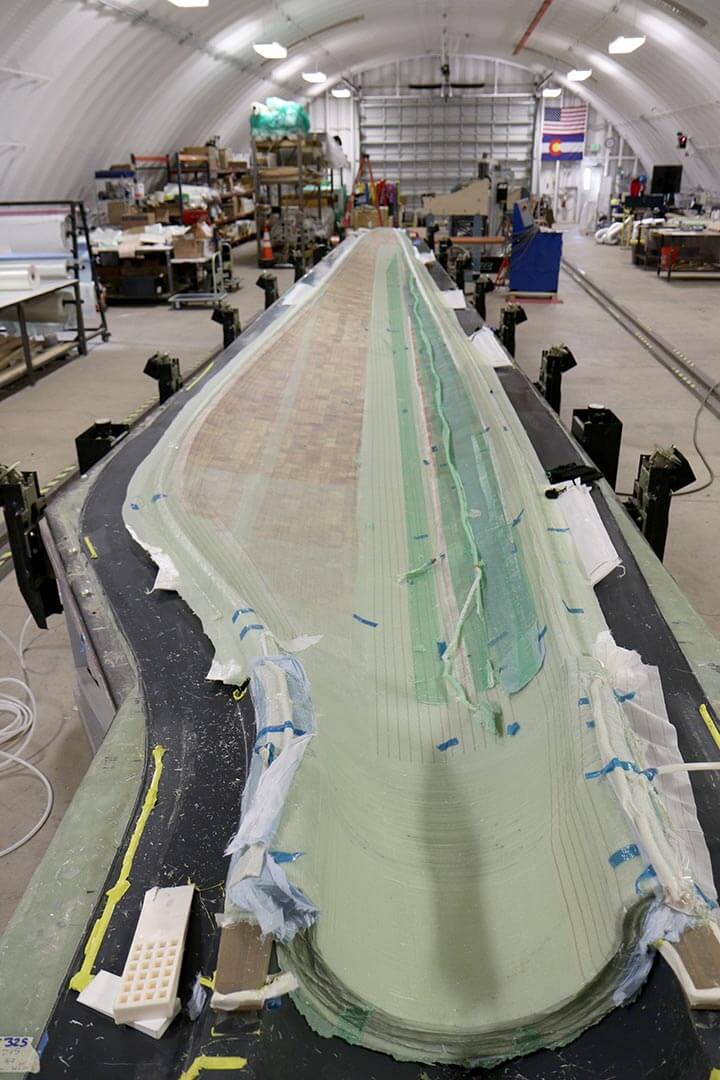Researchers at the U.S. National Renewable Energy Laboratory (NREL) have explored a new manufacturing approach of wind turbine blades; an approach that would improve both their performance and end-of-life recyclability.
Reality is, achieving the elegant shape of wind turbine blades requires the use of advanced engineering. Indeed, most utility-scale wind turbine blades have the same clamshell design: two fiberglass blade skins are bonded together with adhesive and use one or several composite stiffening components called shear webs.
To enhance their efficiency and their wide accessibility, it was important to make wind turbine blades lighter, longer, and therefore less expensive.
So how do they rethink the conventional clamshell?
Researchers from NREL explore a manufacturing approach that combines recyclable thermoplastics and additive manufacturing.
As far as the resin matrix material is concerned, it should be noted that current designs rely on thermoset resin systems like epoxies, polyesters, and vinyl esters, polymers that, once cured, cross-link like brambles.
“Once you produce a blade with a thermoset resin system, you cannot reverse the process,” NREL senior wind technology engineer Derek Berry said. “That makes the blade difficult to recycle.” As more and more wind turbines are installed every year, new wind turbine blades should be designed to be repurposed or even recycled to prevent them from undercutting the green economy they are meant to help build.
The multi-institution team behind this project, has therefore developed systems that use thermoplastics, which, unlike thermoset materials, can be heated to separate the original polymers, enabling end-of-life recyclability.
Thermoplastic blade parts can also be joined using a thermal welding process that could eliminate the need for adhesives—often heavy and expensive materials—further enhancing blade recyclability.
“With two thermoplastic blade components, you have the ability to bring them together and, through the application of heat and pressure, join them,” Berry said. “You cannot do that with thermoset materials.”
Moving forward, NREL, along with project partners TPI Composites, Additive Engineering Solutions, Ingersoll Machine Tools, Vanderbilt University, and the Institute for Advanced Composites Manufacturing Innovation, will develop innovative blade core structures to enable the cost-efficient production of high-performance, very long blades—well over 100 meters in length—that are relatively low weight.
By using 3D printing, the research team can produce modern designs for turbine blades; designs with highly engineered, net-shaped structural cores of varying densities and geometries between the structural skins of the turbine blade. The blade skins will be infused using a thermoplastic resin system.
If they succeed, the team will reduce turbine blade weight and cost by 10% (or more) and production cycle time by at least 15%, a huge leap (or pirouette) for wind energy technology.
Featured image reveals the 13-meter thermoplastic blade built by the NREL team. Photo by Ryan Beach, NREL
Remember, you can post job opportunities in the AM Industry on 3D ADEPT Media free of charge or look for a job via our job board. Make sure to follow us on our social networks and subscribe to our weekly newsletter : Facebook, Twitter, LinkedIn & Instagram ! If you want to be featured in the next issue of our digital magazine or if you hear a story that needs to be heard, make sure you send it to contact@3dadept.com






